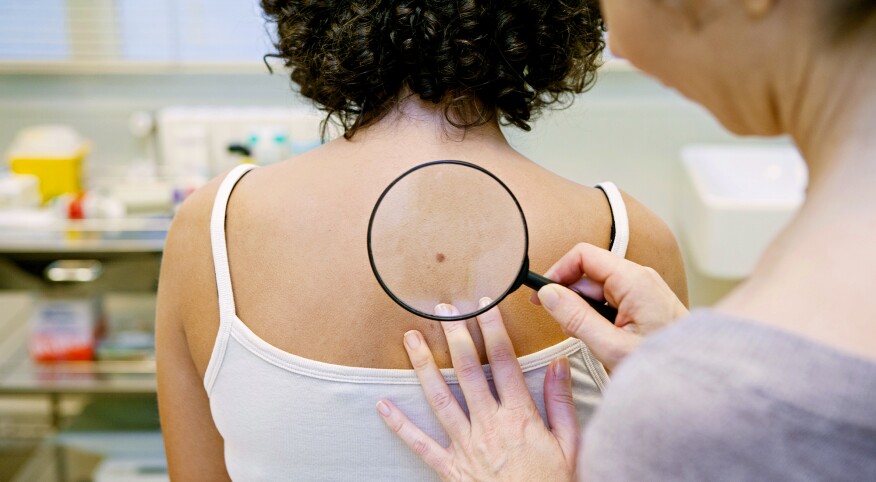Walking out of a lovely brunch one sunny day, my daughter, who lives in Baltimore and hadn’t seen me in a while, said, “Mom, what’s that thing on your ear?” Oh this? I don’t know. It’s just like a dry patch or a pimple. “I’d get that looked at,” my daughter said.
Did I mention she’s a doctor? So, I listened and made an appointment that week with my primary care physician. Right away, just from observing it and touching it, he could tell that this was probably not just a dry patch or pimple. He suspected what my daughter thought — squamous cell carcinoma — skin cancer. So, he performed a biopsy in his office and promised to call as soon as he got results.
Naturally, my mind went to worse case scenarios — and I couldn’t resist Dr. Google. Come to find out, there are three basic types of skin cancer: basal cell, squamous cell and melanoma. Melanoma, I knew. That same year I attended the funeral of my 58-year-old best friend from college who succumbed to the disease, passing away after being over 25 years in remission. Melanoma is the most serious of the skin cancers, while basal cell is usually the least serious.
When my doctor called with the results, I told him I already knew. Thanks to modern technology, my online health portal already had posted the pathologist’s report. We made a plan over the phone for me to see a dermatologist whose specialty is oncology. In fact, the specialist specifically performs only one type of procedure — Mohs surgery.
I made an appointment, got a consultation, and then had the surgery. But first, now that I had a diagnosis I went back to Dr. Google to review squamous cell carcinoma. I found out that I was typical in that it started out as a hard lump with a scaly exterior; mine was on the very top of my earlobe. It is responsible for about 20 percent of all skin cancer cases. Although sun is the most likely culprit, there are a number of factors that lead to this type of skin cancer. I’ll never know how I contracted it.
Prognosis is good if it is caught early, and mine was. Over 50,000 people die annually from this form of cancer, and the typical age for onset is 66. (I’m 56.) It also has a high rate of metastasis; thankfully mine had not spread.
So, the doctor performed Mohs surgery, a microscopic surgery in which the surgeon can take some of the cancer and biopsy it immediately in the office to see if “they got it all.” If the doctor didn’t, she or he can cut some more tissue — as many times as needed until clear margins are reached. My margins were clear after only one removal of the growth and my prognosis is excellent. I have a slight bump on top of my ear where skin was used to stretch over where the cancer had been. If that’s the only negative outcome, I can certainly live with that! Mohs surgery is most successful with basal cell carcinoma and least effective with melanoma, placing squamous cell somewhere in the middle.
Now I will need to have full-body scans yearly, get screened at my annual routine primary care checkups, and be more diligent about wearing sunscreen. Anyone who notices anything unusual on their skin should not hesitate to get it looked at — and encourage their friends and family to do the same. It could be a matter of life or death.

Getty Images









